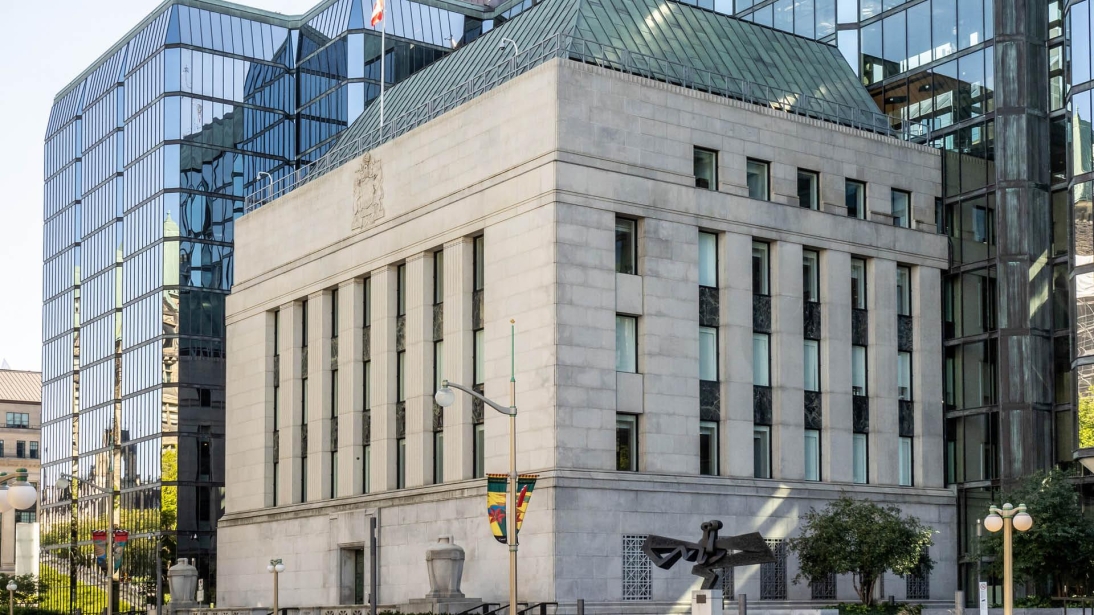Key Takeaways:
- On September 17, both the U.S. Federal Reserve (the Fed) and the Bank of Canada (BoC) cut their respective interest rates
- The Fed cut its rate by 25 basis points, as did the BoC
- In the U.S., the cut comes after an August job report that showed a weakening labour market
- The Canadian job market has also cooled in recent months
The U.S. Federal Reserve (the Fed) and the Bank of Canada (BoC) both cut their respective interest rates today amid a landscape of weakening labour markets.
The Fed cut its rate by 25 basis points, bringing it down to the range 4.00-4.25%, and the BoC cut by 25 basis points, bringing its rate down to 2.50%.
In the U.S., the central bank's cut comes after a weak August job report, downward benchmark revisions that signal a softening labour market, and data that shows a recent uptick in inflation.
“Despite inflation still tracking hotter than Fed decision-makers might prefer, a softer economic backdrop gave the Fed reasonable grounds to cut interest rates,” said TD Chief Economist Beata Caranci.
In its announcement, the Fed said: "In support of its goals and in light of the shift in the balance of risks, the Committee decided to lower the target range for the federal funds rate by 1/4 percentage point to 4 to 4‑1/4 percent. In considering additional adjustments to the target range for the federal funds rate, the Committee will carefully assess incoming data, the evolving outlook, and the balance of risks."
In Canada, the country’s central bank cut its policy rate after back-to-back job reports showed job loss. In August, the unemployment rate rose to 7.1%.
While inflation has come down since its pandemic peak, the annual inflation rate rose to 1.9% in August, up from 1.7% in July.
“We've seen signs of cooling, especially on shelter inflation, but core inflation is still near 3%, which is above the BoC’s target of 2%,” said Maria Solovieva, an economist with TD Economics.
In its announcement, the BoC said: "With a weaker economy and less upside risk to inflation, Governing Council judged that a reduction in the policy rate was appropriate to better balance the risks. Looking ahead, the disruptive effects of shifts in trade will continue to add costs even as they weigh on economic activity."
What interest rate cuts mean
Central banks’ benchmark rates influence the interest rates banks charge on products such as mortgages, business loans, and personal loans. So, when the Fed or BoC cut rates, it generally means consumers see lower interest rates on loans.
For Canadians who have variable rate mortgages with fixed payments, rate cuts can mean more of their payment goes towards the principal of the mortgage, and less towards interest. Homeowners who have a variable rate mortgage with variable payments could see their total payment shrink.
For Canadians with fixed rate mortgages, a central bank rate cut does not immediately make an impact since fixed rate mortgages are commonly based on five-year bond yields.
In the U.S., homeowners with a TD adjustable rate mortgage have an initial fixed-rate term of 3, 5, 7, or 10 years. The interest rate may change at set intervals after the initial fixed term based on market interest rate changes.
American homeowners with a fixed rate mortgage will have the same monthly payment for the term of the mortgage, so changes to the Fed’s rate do not impact regular payments.
What’s next for the Fed?
In the U.S., consumers may see an uptick in pricing due to the impact of tariffs. This could put upward pressure on inflation in the future, Caranci said.
“Higher tariffs have been slow to materialize in U.S. consumer prices. The stop-and-start rollout of trade policies, inventory stockpiling and a substitution away from highly tariffed Chinese goods have helped to mitigate the impact on goods inflation,” Caranci said.
“However, these forces will play less of a role moving forward. The August 7th reset on tariffs, dwindling inventory stockpiles, as well as a clampdown on transshipments suggest that tariff costs will increasingly show up at the consumer level later this year.”
While the Fed's balance of risks is tilted toward reducing the policy rate by enough to support the softening labour market, a flare-up in inflation could encourage it to keep rates higher for longer.
TD Economics predicts that the Fed will likely cut its rate two more times this year.
What’s next for the BoC?
The BoC will continue to balance inflation risks against the signs of economic weakness. While inflation remains its central focus, the tariff shock is ripping through the Canadian economy, weighing on trade and business investment, and creating slack in the labour market, Solovieva said.
This backdrop warrants additional policy support and TD Economics expects the BoC to deliver one more 25-basis point cut before the end of 2025.
This means that Canadians could see the central bank’s rate come down to 2.25% by the end of the year.
“That will bring the policy rate closer to the lower end of the estimated neutral rate range – a level that neither restrains growth nor fuels inflation,” Solovieva said.
